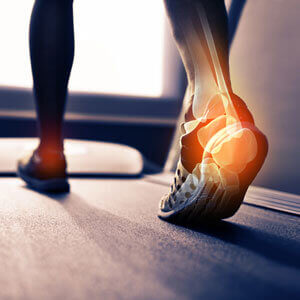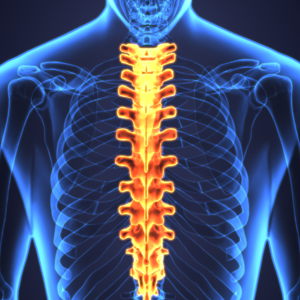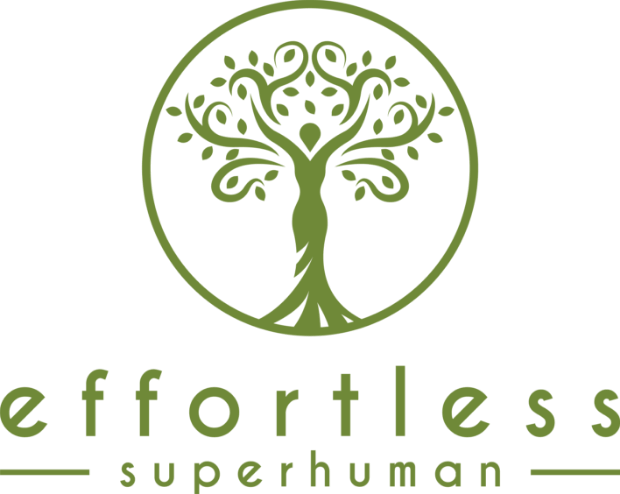The Initial Consultation
 By the time “Chris” walked into my office on a cold, rainy Wednesday morning in July, I already had a pretty good idea of who I was going to meet.
By the time “Chris” walked into my office on a cold, rainy Wednesday morning in July, I already had a pretty good idea of who I was going to meet.
You see, the ‘Intake’ process at Effortless Superhuman requires new patients to complete a comprehensive set of questionnaires about their pain, injuries, dysfunctions, health history, lifestyle factors, and the ‘Good Outcome’ they are trying to achieve.
“Chris” had three main concerns at this time: Chronic right heel pain that had been going on for nearly 2 years and had been diagnosed as plantar fasciitis. Left shoulder pain primarily from gym-based training but now seemed to ache through the day and kept him awake at night. And lastly, lower back pain that referred into his right buttock and had lasted more than 6 months.
Prior to meeting with “Chris”, I read all of his forms and reviewed the radiological evidence that was available for the heel. There was also an X-ray of his lower back, but no imaging had been done of his left shoulder.
For chronic pain cases I also ask to review any blood testing results that are available and a 3-day lifestyle diary that represents the time the patient wakes up, times they urinate, times they defecate (and a description of the stool using Bristol’s stool chart), all medications, all supplements, all drinks/fluids consumed, and all foods eaten through the day in great detail. So, you can imagine that I had a pretty good ‘feel’ for who Chris was by this point, even before meeting him. And some pretty good insights into why a 32-year-old male who weight trains consistently to stay in shape, is unable to heal from what appears to be multiple soft tissue injuries.
Meeting Chris
Chris was a well-built guy with a strong physique and a charming personality. As we spoke he highlighted what he felt were important points from his intake forms and proceeded to provide every diagnosis that he had been presented with from the long list of practitioners that he had consulted (physiotherapists x 2, chiropractor x 1, sports doctor x 1, and podiatrist x 1).
At the end of our brief discussion I progressed to my structured clinical analysis, a detailed evaluation of posture, spinal alignment, range of motion (ROM) at every joint – from the toes, ankles, knees, hips, spinal column, jaw, shoulders, elbows, wrists, hands, fingers, – as well as evaluating neural gliding, and muscle lengths.
Chris disrobed down to boxer shorts and stood comfortably. Immediately, one thing became glaringly obvious. Despite firm, toned legs, arms, chest and back, Chris carried a ring of belly fat that hung just below his belly button and wrapped around to his ‘love handles’. It was almost like it didn’t belong there and someone had slapped it on using plasticine. This was undoubtedly a ‘sign’ or at least a clue as to why Chris was suffering from chronic soft tissue pain and injuries.
Clinical Analysis and Strategy
So what’s going on in my head during this initial evaluation process?
Well, really, I’m asking myself if there are structural reasons for Chris’ chronic pain and whether there are hands-on therapies, corrective exercises or strategic advice I can provide that will have a significant impact on his symptoms.
You see, I like to “win”. And in Chris’ case that meant helping him achieve his ‘Good Outcome’ which was to alleviate his heel, back and shoulder pain and get him back training at full capacity in the gym.
Because Chris had already seen 5 practitioners, he wasn’t going to give me months of treatments to have a positive impact. I needed to find a way to change his symptoms quickly so that he would ‘buy-in’ to my process and commit to healing.
Physical Assessment Findings
 So what do you need to know about my clinical analysis of Chris?
So what do you need to know about my clinical analysis of Chris?
In standing, it appeared that his left leg was longer than his right and that he had a scoliosis in his mid-thoracic spine. An EOS scan would later confirm that his left leg was 11mm longer than his right and that he had a 14-degree scoliosis in his thoracic spine.
The right hip was tight into flexion and rotations and his right straight leg raise (SLR) was 40 degrees compared to 70 degrees on the left.
The thoracic spine was stiff into extension
His neck turning was blocked both left and right
His left shoulder was pain free in most ranges however putting his hand behind his back was painful.
His right heel was painful to touch and put pressure on. The ultrasound of his heel demonstrated plantar fasciitis and a reasonable sized tear.
It’s also worth noting that his waist circumference (as measured through the belly button) was 98cm, at a height of 172cm.
Treatment Approach
So how did I approach things?
Well, I needed to have an impact quickly and I knew that his right heel pain was likely generated by plantar fasciitis and the tear. This would not be a quick easy fix. Whereas his left shoulder pain was not a structural pathology, it was simply caused by neck stiffness and trigger points in his rotator cuff muscles.
Chris lay on the bed in right sidelying with his left arm supported by a pillow. His shoulder musculature was impressive and I got out my 50mm and 75mm needles ready to clear trigger points from his rotator cuff and upper trapezius muscles. Needless to say, the trigger points in his infraspinatus and supraspinatus muscles went off like fire crackers and I was able to reproduce the pain at the front of his left shoulder.
I asked Chris to avoid the gym and all forms of training until our next visit. As well as apply heat to the left shoulder where I had needled.
Early Success: Building Trust
Three days later.
I could tell from the smile on Chris’ face that things had changed and he was impressed. He explained that his left shoulder pain had resolved and that he had slept through the night for the last two nights without pain.
We have lift off!
In session two I jumped at the chance to grab all the other easy ‘wins’ that I could see. I used more needling along with fascial releasing of the lower back, gluteals, hamstring, adductors, and calf muscles on the right side of his body. I then showed him how this had restored full movement in the right hip joint and improved his straight leg raise test to 70 degrees, equal to the other side.
I knew that restoring proper function to his right lower back and hip joint, while restoring SLR to normal would help alleviate some of his lower back symptoms.
The ‘Low Hanging Fruit’ Strategy
I was grabbing all the ‘low hanging fruit’ at this point:
- Needle his left shoulder and clear his pain.
- Restore movement to his right hip and SLR and reduce back symptoms
- Ask him to stop weight training temporarily which meant he would not aggravate his symptoms and ‘undo’ my treatment progress. This had the added benefit of making his heel pain slightly better as well.
By making significant improvements in such a short period of time, I had Chris’ confidence and could now tackle the tough stuff.
My goal was to try to establish why a 32-year-old male who appears to be in relatively good shape and trains consistently, could not heal from pain and injury. Why does his ultrasound show plantar fasciitis and a tear after nearly 2 years? And why has various forms of therapy from skilled practitioners been unsuccessful to date?
The Missing Piece: Nutrition Analysis
Side note: At a later date ‘Chris’ was tested for the MTHFR gene mutations (A1298C and C677T) and was positive for both. This may account for his low folate and B12 levels and was likely a contributing factor in his impaired healing process.
Side note: At a later date Chris completed a Complete Gut Microbiome Test which revealed high calprotectin (inflammation), high zonulin (leaky gut), bacterial overgrowths, and low Bifidobacterium and lactobacillus (Good Bacteria). These findings once again suggest that Chris’ innate ability to heal was impaired.
The Connection Between Deficiencies and Healing
It was also evident that he had widespread vitamin and mineral deficiencies as shown by low folate, low B12, low vitamin D, low magnesium and low haemoglobin.
Does it make sense that a body that is deficient in crucial vitamins and minerals is going to struggle to heal itself?
Vitamin D deficiency alone can have a negative impact on healing from injuries as it plays a critical role in bone health, immune function and tissue repair. A randomized controlled trial in Journal of Science and Medicine in Sport (2021) showed that vitamin D supplementation in deficient athletes improved muscle strength and reduced recovery time after exercise-induced muscle damage.
We know that magnesium plays a supportive role in maintaining the integrity of muscle fascia, primarily through its contribution to muscle function, connective tissue health, and the regulation of inflammation. A 2020 randomized controlled trial in Magnesium Research found that magnesium supplementation (300 mg/day) in deficient individuals reduced inflammation and improved recovery time from muscle strains and tendon injuries.
And how about folate. Vitamin B9 plays a supportive role in maintaining the integrity of muscle fascia, primarily through its contributions to collagen synthesis, tissue repair and cellular health. A 2019 study in The Journal of Clinical Biochemistry and Nutrition noted that folate deficiency can impair fibroblast proliferation, leading to reduced collagen production and weaker connective tissues, potentially affecting fascial integrity.
Are you getting a feel for why Chris’ plantar fasciitis had not resolved in nearly two years? And why the tear in the plantar fascia was larger than 14 months earlier?
Comprehensive Treatment Protocol
Physical Therapy: The Healing Process
From a hands-on-therapy perspective I utilized all of my ‘Physiotherapy‘ skills to promote healing in Chris’ body:
- Modified his training program to minimize load on his right heel and yet allow him to train for mental, emotional and physical health.
- Low dye taping his heel to unload the plantar fascia during gait.
- Needling to the trigger points in his right calf muscles.
- Fascial work and needling to restore balance to his body. As represented by full range of motion (ROM) at the ankle, knee, hip, spinal column, shoulders.
- Isometric loading of the right plantar fascia.
- Right hip retraining for stability and motor control.
- A 4mm heel lift was in his right shoe to accommodate for the 11mm L>R leg length difference picked up on the EOS scan.
Integrative Health Approach
 From a more ‘Integrative Health’ perspective I decided to implement the following.
From a more ‘Integrative Health’ perspective I decided to implement the following.
Change of diet. 100% whole food diet cutting out all processed foods, food additives. This meant eliminating all of the following foods from Chris’ food diary.
Bread, jam, oats, skimmed milk, orange juice, rice crackers, Woolworths roasted chicken, pasta, diet coke, coco pops, ranch dressing, ice cream, chocolate.
In addition, he stopped using the pre-workout supplement and changed to a different brand of protein powder for the protein shake.
In addition, Chris was provided a precise meal plan that was what could be best described as ‘Paleo’, eliminating all grains, dairy and legumes.
Supplementation.
- Methylfolate and Methyl B12
- 5000IU of vitamin D3 and K2
- Magnesium Spray
- Reduced glutathione
- N acetyl Cysteine (NAC)
Advanced Healing Concepts
With the help of a qualified medical doctor, Chris was prescribed a combination of peptides (TB500 and BPC157) which he self-administered for 10 weeks.
The Results
Outcome
Chris’ left shoulder pain resolved after just two treatment sessions. This was a relatively easy ‘fix’ by restoring movement to his neck and thoracic spine, while needling the trigger points in his left shoulder complex.
Chris had suffered from lower back pain for nearly 6 months before I met with him for the first time. My hands-on-therapy techniques quickly restored balance to his pelvis and spine, while restoring range of motion (ROM) to his right hip joint and straight leg raise (SLR). This improved, but did not eliminate his lower back pain.
Once Chris committed to the dietary changes and implemented the key supplements, his lower back pain began to resolve relatively quickly. In less than 6 weeks his waistline dropped from 98cm to 89cm in circumference.
As I predicted, the right heel pain was the most challenging to resolve completely. Most certainly there was a significant improvement month by month, however it would have taken 3.5 months to completely resolve the pain as per my clinical records.
The Secret to Success
 So what was the secret?
So what was the secret?
Well, that could be a tough question to answer don’t you think?
Was it the dietary changes and eliminating all the inflammatory foods, food additives, sugars etc and replacing them with nutrient-dense foods?
Was it the vitamins and minerals that were added to his diet through whole food eating and supplementation?
Was it the hands-on therapy and key rebalancing exercises, along with the 4mm heel lift that restored balance to his body?
Was it the peptide therapy for 10 weeks?
In the end, Chris was able to resolve right heel pain in 3.5 months that had plagued him for nearly 2 years, and to return to full gym training pain-free.
What I love most about this career is that it really is an ‘art’ that includes problem solving and integrating ancient wisdom and modern medicine for injury recovery and resolving pain. I’d love to help you feel better and heal better-contact the practice today to get started.
